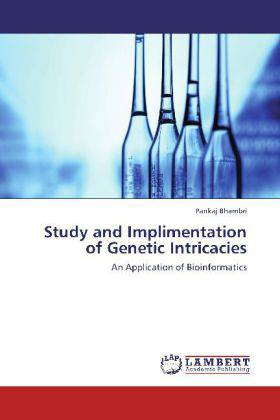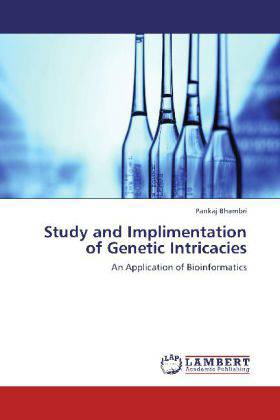
- Afhalen na 1 uur in een winkel met voorraad
- Gratis thuislevering in België vanaf € 30
- Ruim aanbod met 7 miljoen producten
- Afhalen na 1 uur in een winkel met voorraad
- Gratis thuislevering in België vanaf € 30
- Ruim aanbod met 7 miljoen producten
Zoeken
Study and Implimentation of Genetic Intricacies
An Application of Bioinformatics
Pankaj Bhambri
Paperback | Engels
€ 65,45
+ 130 punten
Omschrijving
Past two decades have seen a dramatic increase in the amount of information or data being stored in electronic format. Data storage has been easier as the accessibility of large amount of computing power is available at low cost. The research in bioinformatics has accumulated large amount of data. As the hardware technology is advancing, the cost of storage is decreasing. In the present work, data mining solution is provided for the problem of protein sequence alignment. Different formats of sequences are studied and plain test format is chosen for the problem of consideration. Scoring matrix accesses the replacement of one amino acid by another, accepted by natural selection. The replacement can be due to the result of two distinct processes. i) Occurance of mutation in the portion of the gene template producing one amino acid of a protein. ii) Acceptance of the mutation by the species (similar function). PAM (Accepted Point Mutations) and BLOSUM (Blocks database) are the scoring matrices that are used for the different computations. BLOSUM-50 matrix is used for the problem under consideration. Global and local alignments are predicted alongwith the alignement score.
Specificaties
Betrokkenen
- Auteur(s):
- Uitgeverij:
Inhoud
- Aantal bladzijden:
- 64
- Taal:
- Engels
Eigenschappen
- Productcode (EAN):
- 9783659342561
- Verschijningsdatum:
- 10/02/2013
- Uitvoering:
- Paperback
- Afmetingen:
- 150 mm x 220 mm
- Gewicht:
- 104 g

Alleen bij Standaard Boekhandel
+ 130 punten op je klantenkaart van Standaard Boekhandel
Beoordelingen
We publiceren alleen reviews die voldoen aan de voorwaarden voor reviews. Bekijk onze voorwaarden voor reviews.








